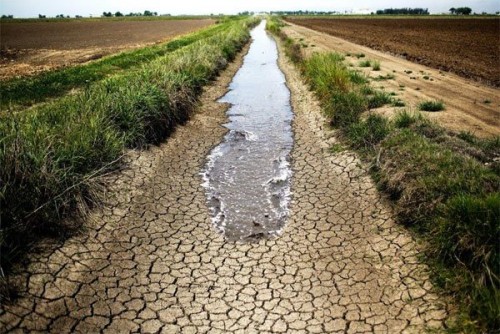From the year 2071 on, scientists say the combined effects of climate change and population increases are projected to present "serious challenges" in close to half of the 204 watersheds covering the contiguous US.
In the researchers' projections, water supply is likely to be under threat in watersheds in the central and southern Great Plains, the Southwest and central Rocky Mountain States, California, and areas in the South especially Florida and the Midwest.
"There's a lot of the US over time that will have less water," one of the researchers, economist Thomas Brown from the US Forest Service told Reuters.
To reach their estimates, Brown and his team used a number of global climate models to project future climate scenarios, while factoring in data on expected population growth.
According to the scientists, water stability in the US was achieved in the 1980s, after decades of increased demand which saw water usage surge ninefold since the turn of the 20th century.
Thanks to advances in dams, tunnelling, and pipelines, stability in water usage has been maintained since then despite a growing population, the team says, but with reservoir construction peaking in the 1960s, those adaptations won't keep delivering the same way in the future.
"Although studies show that climate change is likely to bring increasing precipitation in many areas of the contiguous 48 states of the [US], especially in northern regions, other areas are expected to receive less," the authors write.
"Furthermore, increasing temperatures, which are expected everywhere in the US, will tend to lower streamflow via the effect of temperature on evaporative demand, in some areas completely negating the positive effect of increasing precipitation and leading to decreasing streamflow."
In the study, the researchers modelled water supply and demand for 14 alternative climatic futures, using two future greenhouse gas emission scenarios with seven global climate models, and assuming water use efficiency will continue to improve as it has in the past.
While the findings are only projections and inherently uncertain, as the researchers acknowledge, they are nonetheless grim.
"In future periods, as population and economic growth plus the changing climate alter water yield and demand, shortages are projected to increase substantially, in the absence of adaptation measures, with many of the 14 futures we examined," the researchers explain.
"Averaging across the 14 futures, 83, 92, and 96 basins are projected to incur some level of monthly shortage in the near [2021–2045], middle [2046–2070], and far future periods [2071–2095]."
The team is eager to emphasise that these projected water shortages are not locked in, though, and could be mitigated by ongoing and future adaptations to water usage – especially in agriculture which accounts for 75 percent of annual water consumption in the US and industry.
In previous decades, reservoir construction has been a massive boon to water stability, but as the world gets hotter and drier, the researchers say it will be less useful compared to other 21st century adaptations, such as boosting irrigation efficiency.
"Where water is the limiting factor, a reservoir enlargement is unlikely to store any water," Brown says.
Tapping into groundwater is another option, but given that it is a limited and threatened resource itself, it's not something we should be too reliant on, the researchers say.
Instead, our water usage as a whole has to be looked at, and we particularly need to look at increasing the efficiency of usage among the primary users of this limited and precious resource.
"In reality, irrigated agriculture is unlikely to bear the full burden of accommodating future water shortages," the authors write.
"Nevertheless, given the large quantities of water used in agriculture and the fact that most of that water is used to grow relatively low-value crops, the agriculture sector is likely to face serious challenges, all else equal."

Much of the United States could be gripped by significant water shortages in just five decades' time, according to predictions made in a new study.




